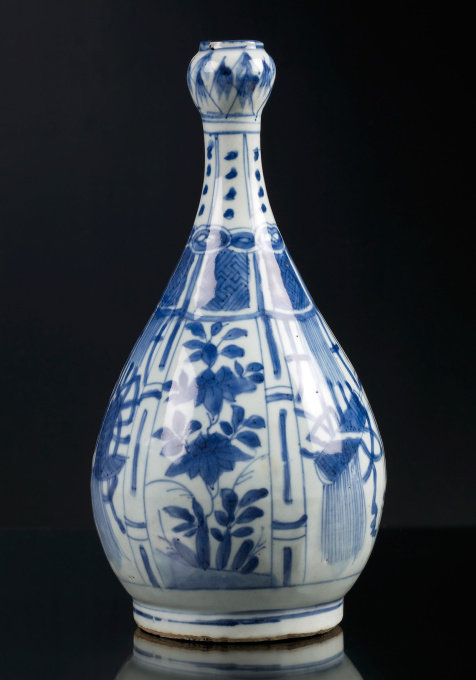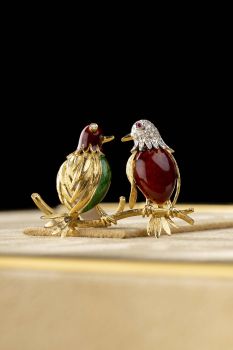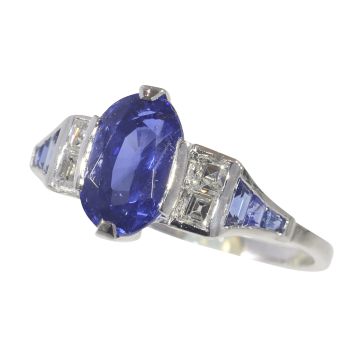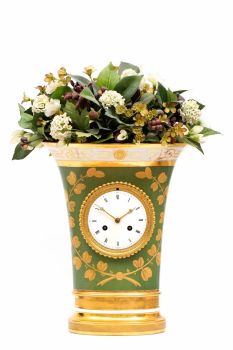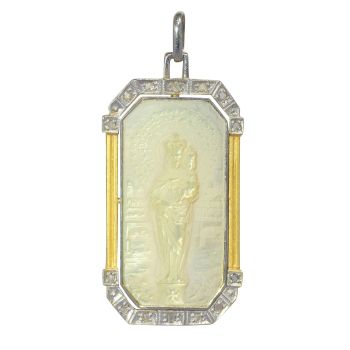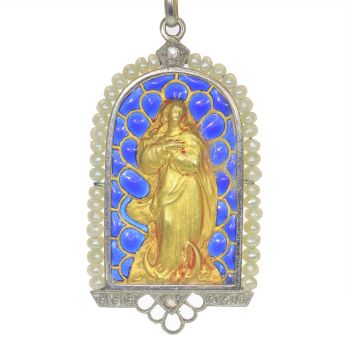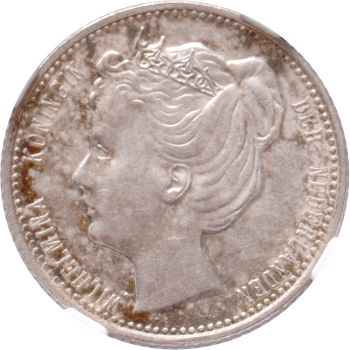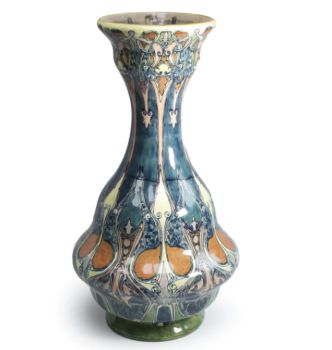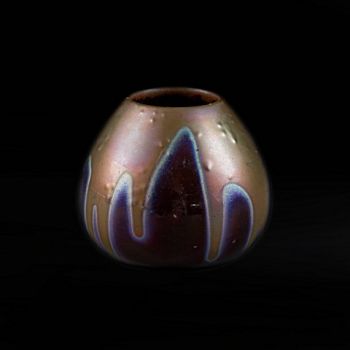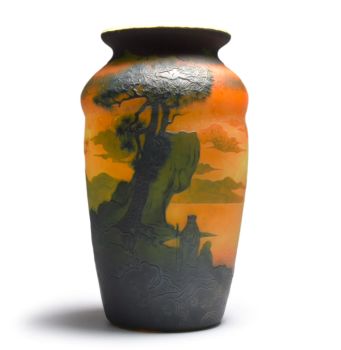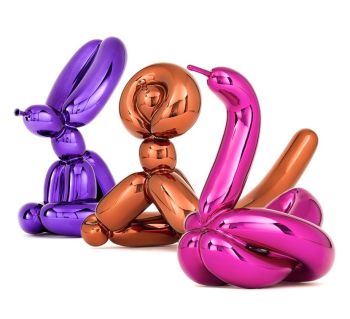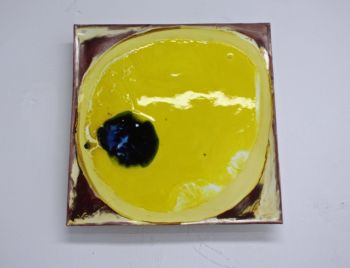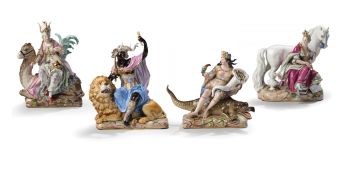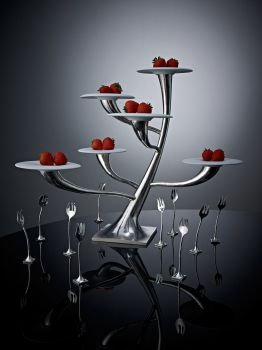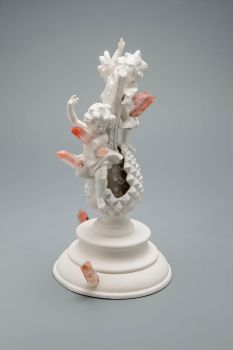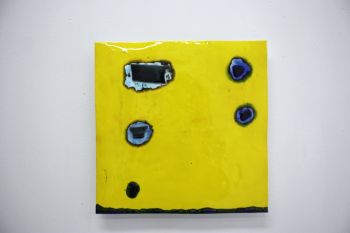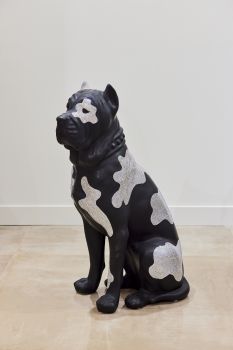Chinese Blue and White Garlic Neck Bottle Vase, WanLi period 1620 - 1640
Artista Desconocido
Porcelana
30 cm
Actualmente no disponible a través de Gallerease
- Sobre la obra de arteA blue and white decorated pear-shaped bottle with a flower decoration. The shape of the top is commonly referred to as garlic-button. These type of bottles were imported in Holland from the beginning of the 17th century onwards.
In the registers of the VOC pear-shaped and “Persian” bottles are frequently recorded. Although they are mentioned separately the distinction is not clear.
As opposed to plates and bowls in kraak-porcelain, hollow shapes like these are not made as delicately and thin as is typical for this type of Chinaware. Nevertheless it is assumed that these bottles are to be categorized as kraak-porselein because of the decoration in compartments.
The bottleneck is comparatively short relating to the body. This indicates a somewhat later date.
Several bottles with a similar shape and decoration were salvaged from the Hatcher wreck, a junk that sank around 1643. Therefore this bottle can be roughly dated to this period. The museum Princessehof in Leeuwarden own a similar specimen (inv.nr. GMP 1970-79).
It is remarkable that the garlic-button is still intact. Often this knob was removed in Indonesia and ground to a powder that was used in a tonic. - Sobre el artista
Puede suceder que un artista o creador sea desconocido.
Algunas obras no deben determinarse por quién está hecho o por (un grupo de) artesanos. Algunos ejemplos son estatuas de la Antigüedad, muebles, espejos o firmas que no son claras o legibles, pero también algunas obras no están firmadas en absoluto.
También puedes encontrar la siguiente descripción:
•"Atribuido a …." En su opinión, probablemente una obra del artista, al menos en parte.
•“Estudio de….” o “Taller de” En su opinión, una obra ejecutada en el estudio o taller del artista, posiblemente bajo su supervisión
•“Círculo de…” En su opinión, una obra del período del artista que muestra su influencia, estrechamente asociado con el artista pero no necesariamente su alumno.
•"Estilo de …." o “Seguidor de…”. En su opinión, una obra ejecutada al estilo del artista pero no necesariamente por un alumno; puede ser contemporáneo o casi contemporáneo
•"Manera de …." En su opinión una obra al estilo del artista pero de fecha posterior
•"Después …." En su opinión, una copia (de cualquier fecha) de una obra del artista
•“Firmado…”, “Fechado…” o “Inscrito” En su opinión, la obra ha sido firmada/fechada/inscrita por el artista. La adición de un signo de interrogación indica un elemento de duda.
•“Con firma…”, “Con fecha…”, “Con inscripción…” o “Lleva firma/fecha/inscripción” en su opinión la firma/fecha/inscripción ha sido añadida por alguien que no es el artista
Artwork details
Related artworks
Artista Desconocido
Pulseira de diamante do século 18 com entalhes de 2.000 anos1790
€ 23.000Adin Fine Antique Jewellery
 curada por
curada porDanny Bree
1 - 4 / 12Artista Desconocido
Vaso Cristallo façon de Venise1600 - 1650
Precio a consultarPeter Korf de Gidts - Antiquairs
Frères Daum
Daum Nancy – “Paysage Soleil Couchant” vase with two applied handles1900 - 1910
Precio a consultarAntiques Emporium
1 - 4 / 24Samuel Dejong
Anatomia Blue Heritage, Hercules Open2017 - 2019
Precio a consultarVilla del Arte Galleries
 curada por
curada porGallerease Magazine
1 - 4 / 24

